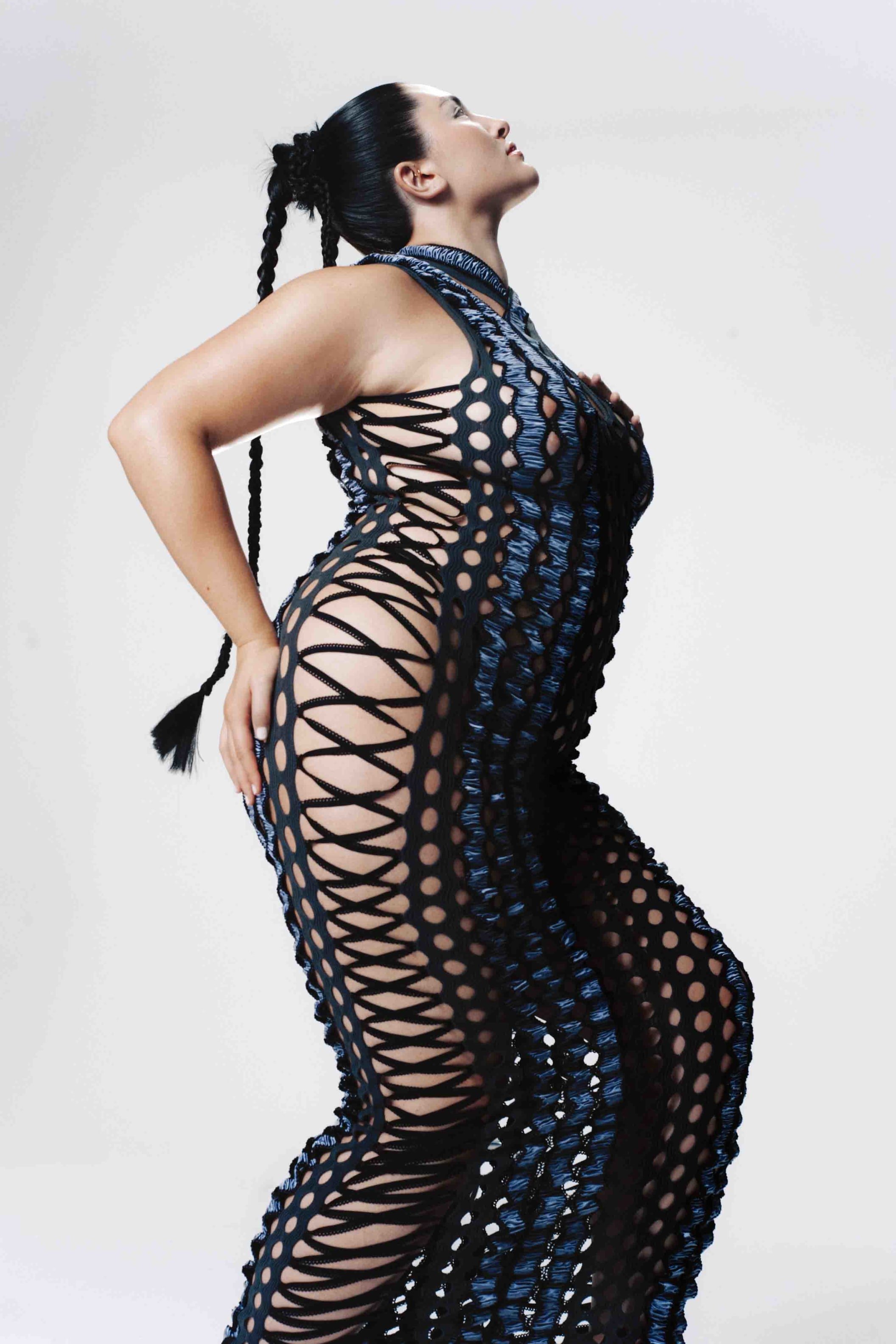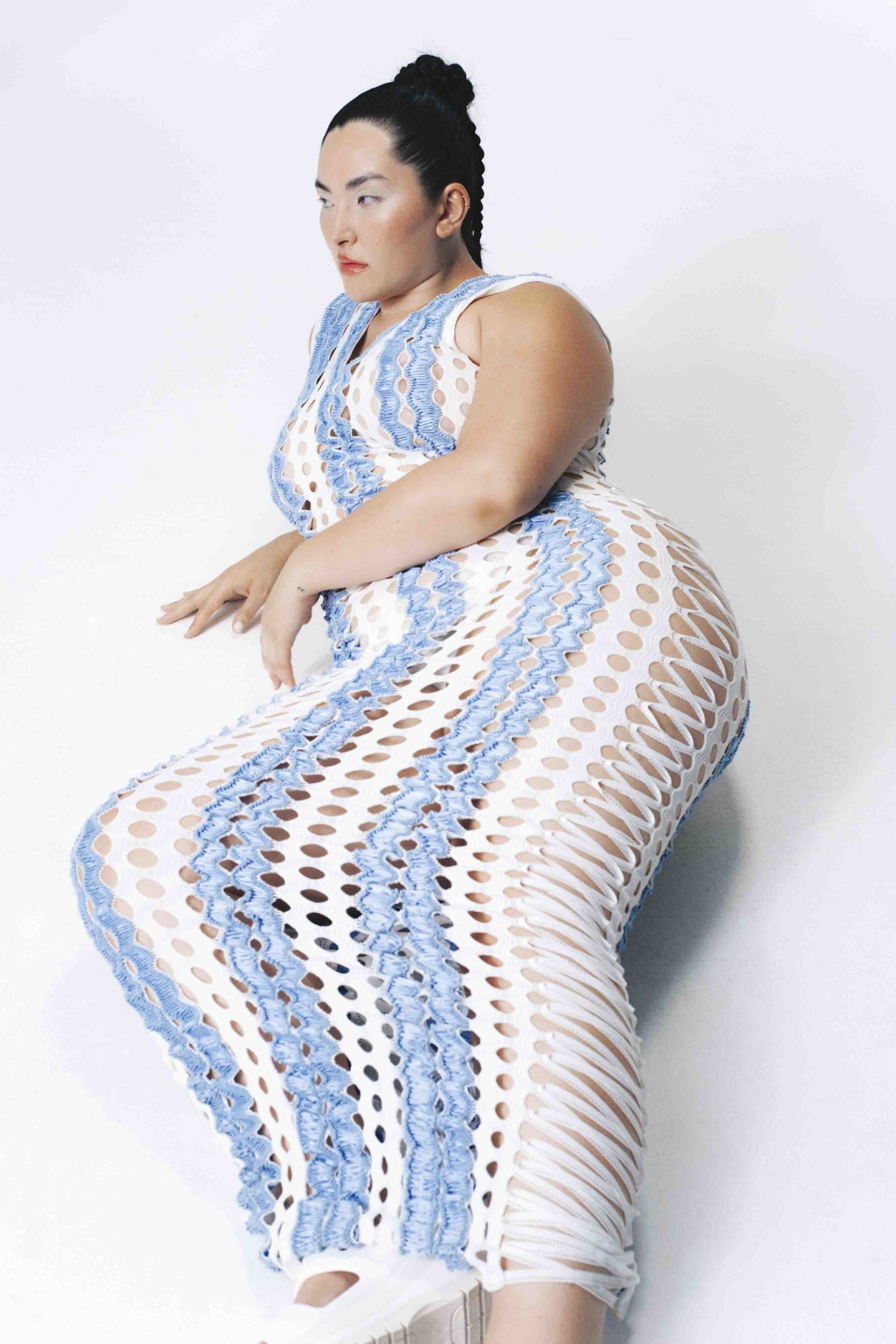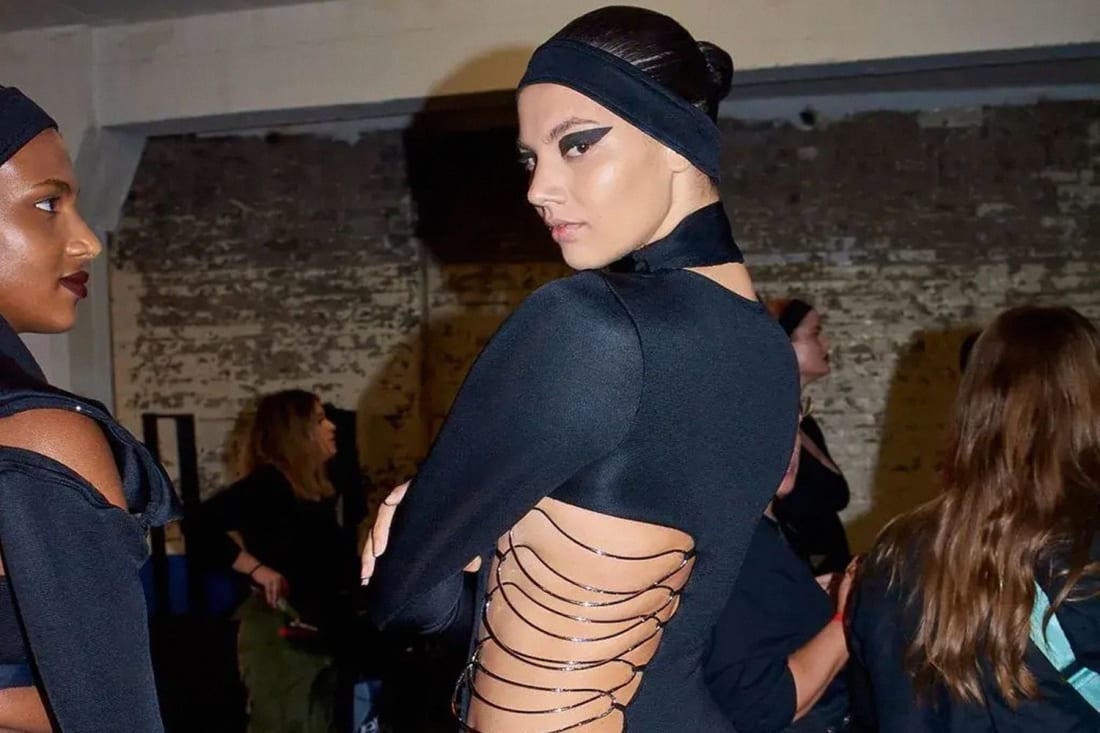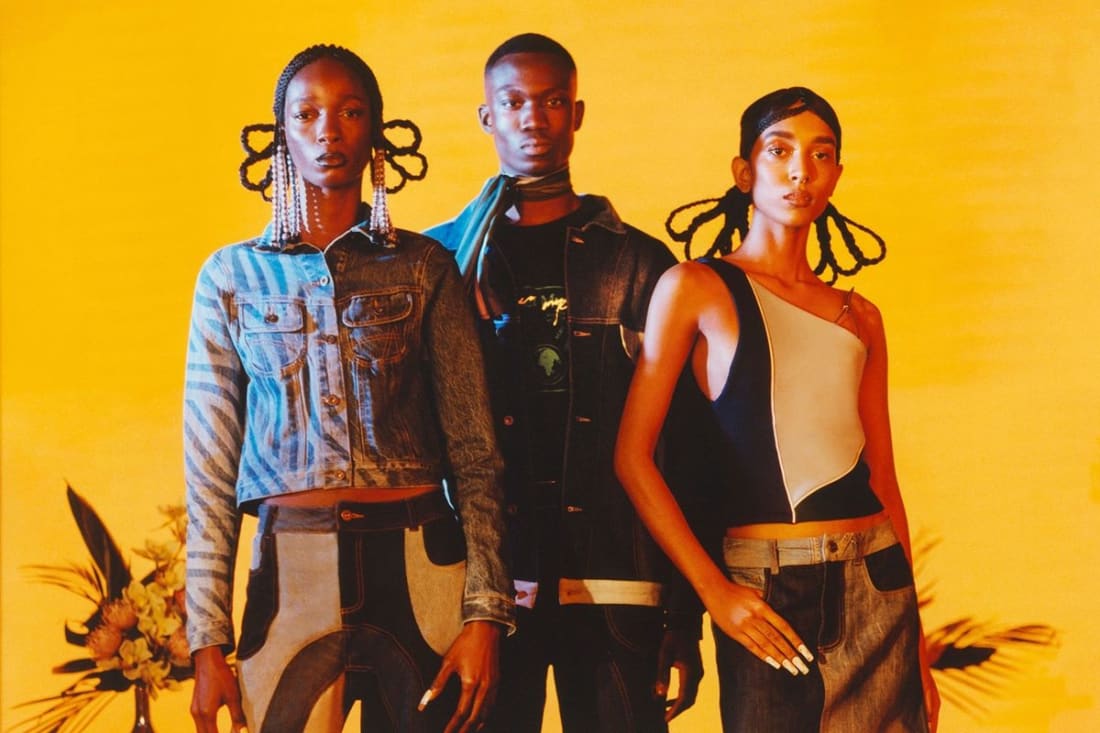Sinéad O’Dwyer on how to run a fashion brand that puts mental health first
The designer tells woo how fashion hurt then healed her relationship with her body
The designer tells woo how fashion hurt then healed her relationship with her body
“I struggled with eating disorders for the majority of my life, from age 11 to five or six years ago, but I don’t think I ever connected it to fashion until I started working in the industry.”
There are two days to go until Sinéad O’Dwyer’s SS24 London Fashion Week presentation and the designer is feeling surprisingly relaxed. “I started working really hard really early so I’ve been feeling calm this season,” she explains.
This calm is a reflection of her wider sense of inner peace and happiness she has felt over the past couple of years. Having spent most of her teens and early twenties battling with body dysmorphia, the Irish designer has learned to let go, and her inclusive sample sizing process has helped her cultivate greater self-acceptance. "I feel a comfort in my own skin now that I never thought I’d feel,” she says. “It’s transformed my relationships with other people because before, my obsession coloured all my relationships, including with my partner. Having that lift significantly has made life so much more pleasurable.”


For SS24, Sinéad returned to where this journey began, her alma mater, the Royal College of Art. Her signature shibari rope bodysuits were embellished with crystals or worn with leotards while crisp white shirts, layered box pleat miniskirts and statement over the knee socks referenced school uniforms. For Sinéad, the uniform is a place of refinement, a place where she can continue her exploration into shirting, particularly looking to create flattering shirts for people with "bigger breasts and bodies with fat." Elsewhere, pieces are clipped together and culottes replace skirts for ease of movement. Sinéad cycles everywhere so these practical considerations were on her mind while designing the collection. “Cycling to and from work helps me get in a good headspace,” she says. “It's nice to just get outside.”
It was while studying at the RCA that Sinéad started to realise the root of her eating disorder. This realisation came partly as a result of fashion school’s lack of consideration for size inclusivity when providing patterns and mannequins for students to design with. “I started to connect my own struggle and self-hatred and obsession with being thinner with patterns and actual physical products, not just imagery,” she says. “The experience of trying something on that fits too tightly in places, but fits in other parts is actually very uncomfortable and you can’t go for a different size because that won’t fit either.”
This experience inspired the creation of her eponymous brand which has become a beacon of radical inclusivity in a luxury fashion landscape that seems to be going backwards, with runway models getting thinner once more. Last season, Sinéad opened London Fashion Week with an agenda setting show that featured models ranging from sizes 8 to 22 as well as maternity wear and the inclusion of a model using an electric wheelchair. The show gained her inclusion in the catwalk segment at the Design Museum’s REBEL: 30 Years of London Fashion exhibition alongside more established designers like JW Anderson and Christopher Kane.
This season, however, Sinéad stripped it back to basics, showcasing the new collection in her old MA fashion studios in a presentation format that combined a runway show with an interview about her process. The collection is “a continuation and a refinement,” she says. Resisting the pressure to do things on a bigger scale each season, Sinéad is instead focusing on honing her craft. There is a feeling among many in fashion right now that the industry needs to slow down. These conversations usually exist within an environmental context, but environmental responsibility and inclusivity often go hand in hand.


“I would like to see more designers doing smaller collections,” says Sinéad. “Too many individual styles are being developed and produced and that’s why the majority of designers don’t have inclusive sizing.” If brands are creating collections with 70+ looks then they simply don’t have the time to produce them in a variety of sample sizes. Slowing down, reigning it in and putting a greater focus on people over profit could make fashion week not only more sustainable, but also more representative. “I find it scandalous that more people don’t discuss how open the discrimination is in the fashion industry,” Sinéad says.
This more mindful approach is reflected in the way she runs the business behind the scenes too. “I care about my team and myself more than the clothes, obviously,” she says. “There's never any shouting because if something is getting very stressful, I will let it go."
Like many fast paced, high stress creative industries, fashion has historically overlooked the importance of mental wellbeing. Change has to happen on a small, person-to-person level before it can become more widespread. The way she works with her team and her openness about her own mental health struggles, particularly about how fashion has both helped and hindered them during different periods of her life, means that Sinéad is very much a part of that change.
After all, it all starts with looking after each other. Fashion might have a hard nosed reputation, but now, being softer and kinder to yourself is in. As Sinéad puts it, “I don't think that fashion is so important that we need to jeopardise people's mental health for it.”









